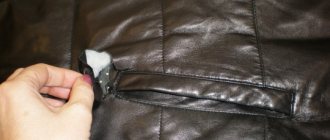It is useful to keep in mind that a homemade rat trap can be even more effective than standard purchased products - this fact has been repeatedly confirmed in practice. A typical example is when rats bypass a conventional mousetrap, feeling that this device is fraught with danger, but quickly fall into the trap of a new design that is not yet familiar to them.
At the same time, to catch a pest it is not at all necessary to make something complex, cumbersome and requiring serious skills. It is known that everything ingenious is simple, and rat traps assembled with your own hands from scrap materials are the best proof of this: the lack of expensive parts, time or skills here is compensated by the ingenuity of the creator and the ingenuity of the design itself.
As you will see below, a very effective trap can be assembled in just a few minutes from ordinary plastic bottles, a bucket or a pan, and there are many options for such traps.
Below are descriptions of the 8 most effective simple homemade rat traps and illustrative examples of their work in practice...
Option #1: Tilting Trap
The operating principle of this design is that the animal, approaching the bait, falls into the trap. This mechanism can be implemented in many ways.
Here's the simplest one:
- Make a tunnel out of cardboard (you can also use a piece of wide plastic pipe);
- Place it on the edge of the table so that half of the tunnel overhangs the edge (it helps to lightly tape it to the table so the rat can't move it);
- Place bait at the very edge of the tunnel;
- Place a barrel or deep bucket under the site of the expected capsize.
The animal, attracted by the smell of the bait, will climb along the tunnel, knock it over at the edge of the table and fall into the container with it. The video below shows how this happens:
Agree, what could be simpler?
There may be several options for making such a homemade rat trap. For example, a tilting bridge can be placed directly on the edge of a bucket, and a ladder can be connected to it:
For this purpose, you can use a piece of whatman paper with slits to cover the bucket. The rat climbs onto the Whatman paper for the bait and falls through the slits into the bucket:
On a note
If you use a bucket or can to catch a rat, it is useful to first pour water into it - without water, the animal will easily jump out of the trap. In addition, it will be easier to catch the pest in water (just don’t forget to wear thick construction gloves before doing this).
By the way, you can make a mousetrap using the same principle with your own hands from a plastic bottle. In this case, a bottle with an open neck is placed on the edge of the table (or you can make a special inlet hole), bait is placed in it, and the bottle is tied by the neck with a thread to something heavy on the table itself. The mouse climbs into the bottle, halfway to the bait, knocks it over with its weight, and the entire trap with the prey hangs on a thread:
On a note
It will not be possible to catch a rat in a bottle in this way - the animal will easily jump out of the overturned trap. Perhaps, as an option, you can make a tunnel out of a bottle like the paper one discussed above, cutting off its bottom and neck, and then catch the pest in a bucket or barrel.
Killing Loop
A convenient killing device for catching pests is made from bars and wire. These homemade rat traps are put together step by step:
- Prepare a wide beam 40 cm long.
- A hole with a diameter of 9 cm is made in the material.
- Stepping back from the edge of the workpiece by 6 cm, create a notch with a large depression.
- A powerful spring is attached to the top of the device with metal brackets.
- 4 cm are removed from the cut, 2 small symmetrical holes are made in the upper part.
- 2 more holes are drilled at the bottom of the wood, a strong thread is inserted into them, passed through the upper holes and tied to a spring.
- A loop is made from thin steel wire. It is installed in the file and tied to the edge of the spring.
- The structure is installed opposite the hole and equipped with food.
The principle of the noose trap is to suffocate the rodent
The principle of operation is simple: the animal will head towards the bait, and the stretched threads will block its path. The rat will gnaw through the obstacle, at that second the spring will be released, rise sharply upward along with the loop and strangle the pest.
Option number 2: rat traps made of plastic bottles
The traditional version of this trap looks like this:
- The top part of the bottle is cut, it opens slightly, a long rod is attached to it, to which, in turn, a tourniquet is attached, which plays the role of a spring;
- Near the bottom of the bottle, through a hole in the wall, a trigger is attached, to which the bait is attached;
- The door from the neck of the bottle is attracted by a rope to the body of the bottle - this will allow it to slam shut when the animal pulls the bait.
Capture is simple: the rat climbs into the bottle, pulls the bait, and the rubber band slams the door. That's it, the animal is caught. The video shows how this design works and how to assemble it:
And here is another example of a simple but very effective rat trap, which you can easily make with your own hands from a plastic bottle:
- The bottle is strung on a rod (for example, on a thick wire);
- Then the outside of the bottle is coated with bait - sour cream, porridge, stew;
- The rod is placed on the edges of a bucket or barrel;
- A bridge made of boards is connected to the bottle.
It is also useful to read: Glue for catching rats and mice, as well as important nuances of using sticky traps
Then everything is simple: the rat climbs along the bridge to the bottle, climbs on it to lick the bait, the bottle spins, and the animal falls into the bucket. Like this:
A similar design can be made from a bucket and a beer can. The photo below shows a corresponding example:
The disadvantage of rat traps with a rotating bottle (or jar) is that they are bulky - it is not always convenient to use them at home.
It’s easier with mice - for lovers of beautiful solutions, a compact mousetrap made from a plastic bottle has been invented, which, if desired, can be placed under a table or in a closet. The following video shows how to assemble such a trap from available materials:
The main thing in this design is to correctly guess the center of gravity of the bottle.
If you take a suitable bottle, you can use it to make a rat trap using the same principle. It is only important to keep in mind that, given enough time, the animal may try to gnaw through the walls of the trap and thereby get out of it.
The advantage of handmade
The main advantage of a homemade trap is that you yourself know how it works, how it works, and you yourself can make a number of changes and modifications aimed at improving the performance of the trap for rodents. Most often, these are rather simple designs for catching rats, which can be made by spending a minimum of time and materials on manufacturing. The appearance of these parasites, unfortunately, is not uncommon in apartment buildings with a garbage chute. I myself often encountered a tailed beast jumping up the steps of a flight of stairs. It is best to deal with this type of problem yourself to be sure of the result.
Option number 3: covering live trap
This is perhaps the simplest version of a homemade rat trap. To catch a rat or mouse with it, just take a pan and a coin of suitable size - turn the pan upside down, tilt it slightly and rest one edge of it against a coin placed on its edge.
Bait is placed under the pan. When the rodent climbs for the bait, it will certainly touch the coin, it will tip over and the pan will cover the animal.
Here is an example of an implementation where a jar is used instead of a pan:
The disadvantage of the design is frequent false alarms (when a rat touches a container or coin before it has climbed inside the rat trap).
A more sophisticated homemade trap of this type is the improved “coin container.” For example, a container can be rested on an unstable stand, a thread can be tied to the stand, the thread can be thrown over a spacer in the container and the bait can be tied to it:
The rat will sneak under the container, pull the bait and move the “guard”.
Another option is to use a strip of cardboard of sufficient height instead of a coin with a special corner for attaching bait:
Here the animal, pulling the bait, knocks over the cardboard and covers itself with the trap.
It is only important to keep in mind that to make homemade rat traps you need to take a container that is heavy enough so that the rat cannot move it.
The video below shows another interesting example of such a rat trap:
Why you need to fight rodents
Danger from rodents
If we take agriculture, then the situation with rats is very difficult there. The problem lies in the destruction of crops: they spoil the bark of trees and eat small plants that were planted by farmers.
Rats can live in food warehouses and this is not even uncommon. Over the course of one winter, a flock can spoil a large amount of food. Rats also eat bird eggs, causing harm to poultry farms.
They not only damage the foods they feed on, they even spread to untouched foods. Scientists conducted an experiment, its essence was that the rats were offered a whole warehouse to live in. The period of residence was limited to two months. During this time they were able to ruin everything that was possible. When calculating all the losses, the damage was simply colossal. About two hundred tons of sugar, fourteen tons of flour, two hundred boxes of pasta were eaten by rodents over these two months. Accordingly, it was no longer possible to restore all this.
It can be concluded that rats pose a danger not only to human health, but they can also affect financial components. Thanks to the teeth of rats, they can easily chew through not only thick cardboard, but even metal. It has been proven that rats can destroy various structures by gradually destroying concrete supports. It follows from this that if there is no food in the warehouse, they will begin to destroy the warehouse itself. If there are a lot of them, then it won’t be difficult for them to damage the walls, wiring and equipment in order to get out.
What is their danger?
Rodents in the apartment
These rodents have caused great harm to people since ancient times. It is not necessary to take only the financial aspect here. First of all, the most important threat is infection, which is carried by almost all individuals. Unfortunately. Most of the diseases they carry are fatal to humans.
The paradox is that animals become infected very easily. In the wild, they begin to hunt other individuals. As a rule, in the wild, animals in almost all cases are infected. Then a chain reaction occurs and the virus begins to be transmitted from one organism to another.
But this is not the only way rats can become infected. These animals can eat almost anything, and to some extent they are omnivores. You can include already dead animals in their diet. When a rat eats a corpse, a huge number of bacteria and microorganisms have already multiplied in it. They are the ones that lead to rat infection. The transfer of cadaveric microorganisms to humans can have a sad outcome.
Important! We must not forget about the body of a rodent, because various microorganisms can also live on it. It is not at all necessary for rats to bite a person; even contact with him will be enough for her to infect food near a person
And if you eat them, a person will become infected. There have been cases of parasites transferring from rats to domestic animals.
Diseases carried by rats
If you start counting the diseases that rats can carry, there are about eighty of them. The most dangerous can be called the plague. Turning to history, one can remember how this disease caused entire epidemics, but now it is under control.
Encephalitis can also be classified as a dangerous disease. This disease affects the human brain and reduces the chances of life if the infection is not prevented in time. Unfortunately, people are not always able to see a doctor in a timely manner. You can also distinguish diseases such as rash type and rabies. These diseases pose a great danger to humans, especially to children. There are preventative vaccinations, but not everyone gets them.
Note! All of the above diseases are transmitted through an animal bite, but we must not forget about transmission through spoiled food. You should not eat spoiled cereals or sugar, there is a high risk of infection
Diseases such as leptospirosis, giardiasis, tuleryemia, hemorrhagic fever and listeriosis can be provoked. You should also be wary of tuberculosis, hepatitis, salmonellosis, fungi and viruses, which are also carried by rats.
Option #4: cage traps
Such designs are characterized by high reliability, durability and efficiency, but they are quite difficult to make yourself. Their manufacture requires special materials and parts: the body itself is made of durable steel mesh, metal or wood panels, and the trigger mechanism is based on a spring. However, with sufficient desire and skill, assembling such a device with your own hands will not take much time.
The principle of operation of the rat trap is as follows:
- The cage has a rising door with a guard - when alert, the trap door opens upward with spring tension;
- At the end of the cage, a bait is attached to a hook, the other end of the hook holds a guard;
- When the rat pulls the bait, the gate lowers and the door slams shut.
The video below shows examples of manufactured rat traps of this type:
Electrical device
Without special skills and knowledge in the field of electrical engineering, it is difficult to make such a homemade product. Materials for the electric trap:
- plug;
- socket;
- 2 capacitors;
- resistor R2;
- diodes;
- 2 getinax s1 plates;
- resistor R1;
- the wire.
Strictly adhere to the electrical trap assembly diagram, otherwise there is a risk of a short circuit (such current is not dangerous for humans).
To make the device, buy a pair of getinkas plates, 1 mm thick, with foil on one side. You can get by with a budget option and build a device from metal strips. The structure is installed on a wooden floor. The width of one strip is 1 cm, length - 50 cm. The gap between the elements is 1 cm. The procedure according to the diagram and drawing:
- Electric capacitors are used to secure the edges of the strips. A soldering iron and tin are used to solder the leads of the parts to the plates. As a result, a battery is formed.
- Take the wire connected to the outlet and attach it to two strips.
- An adapter is constructed from two plugs to provide the capacitors with an electrical charge.
- The current strength is reduced by installing a resistor with a resistance of 8 kOhm. It is placed in front of the diodes.
- One terminal of the 10 kOhm resistor must be fixed, but the other edge is left free. If you press a two-watt electric element with a wooden stick, it will charge in 5 seconds.
Before hunting rats, the device is charged with a rectifier up to 300 V. They look for the pest's hole and place the device in front of it at night. The bait is placed there. The next morning there will be a corpse in the trap.
Option #5: Tunnel Trap
The entrance hole of the tunnel rat trap is made in the form of a valve with sharp petals. The operating principle of such a device is as follows:
Such structures are often used to catch courts, mice and rats in garden plots - in this case, the structure is made from a piece of pipe, at each end of which a valve is installed. The trap is then installed in the underground wormhole. In the end, it doesn’t matter from which side the mole (or rat) approaches the trap - the animal will still be caught.
It is also useful to read: Which rat and mouse repeller is better: a review of devices and reviews about them
Here is another example of a trap of this type:
Precautions
Rats
Now you need to consider ways to protect yourself.
In fact, there are quite a lot of options, you can adapt each method to your situation, it depends on the conditions.
Natural enemies. We must not forget about cats, mouse and rat hunters. Many people get cats for this very purpose. You should remember that. That wilder cats are better at hunting. You should not take purebred pets for this not so simple mission. You also need to remember. That some cats are good at catching mice. But they can't handle rats. These breeds include the Sphynx
An important condition is to vaccinate your pet against diseases transmitted by rodents in order to protect it. Repellent
Not always effective, but deterrents such as smell or sound can still be used
Rats have very sensitive receptors, especially for odors.
Therefore, you can use substances such as ammonia, vinegar, kerosene or acetone. If you take sound into account, the most effective method is ultrasound. A person is unlikely to hear anything since he simply does not perceive these frequencies, and the rats do leave, but not for long
Poison. Not an effective method, but you can try. Rats are considered quite cunning rodents; their vitality often amazes even scientists. One of the main disadvantages of this method is that after death the rodent leaves behind a persistent smell of decomposition. Traps. Quite a radical method, but it is really effective. After using traps, a person will immediately understand that the rat no longer poses a danger. It cannot be ruled out that over time animals learn to bypass traps that have a guillotine mechanism.
To summarize, we can say that rats and mice cause great harm to people, so it is important to take care of your safety measures and protect yourself from meeting them. To do this, you need to make traps for them or order them online if there is no other option. https://www.youtube.com/embed/m0lmXTIznuU
Option number 6: snare
Generally speaking, catching rats with snares is quite problematic due to the small size of the animals. However, if you try, you can still catch the pest, and there is even a small life hack that allows you to make such a rat trap with your own hands from improvised means.
For this you need:
- Cable tie;
- A piece of fishing line;
- Heavy load - for example, a wrench;
- Paper clip;
- Bait - for example, a crust of bread.
This is how a homemade rat trap made from a cable tie works in practice:
On a note
When making this trap, it is important to choose the right weight of the load. If it is too small, it will not tighten the tie with the necessary force, and the rat will run away. If the load is too heavy, then using such a structure as a live trap will not work - the animal’s ribs will be broken by the loop.
Which bait works flawlessly?
Above, a homemade method was described on how to catch a rat in the house using traps, or rather as many as 6 of them. However, neither will work if you pick up a bad bait. So what is the use of catching rodents? As has been said many times, you will need food with a pleasant and distinct smell. This can be flour, beer, lard, baked goods, cheese, grains and a number of smoked meats. First, try cheese, and if it doesn’t suit you, feel free to use any product from the list above.
Option #7: Zürner trap
This classic trap works on the same principle as the tipping rat traps described above. Its difference lies only in the completeness of the design and appearance: the Zürner trap is a wooden house with two entrances, in which the bait is located in the middle of the “corridor”, and the floor on both sides of it is made of boards on hinges. When the animal approaches the bait, the board collapses under its weight, the animal falls into a large closed chamber, after which the board returns to its original position on a hinge.
The figure below shows a diagram of such a rat trap:
Thanks to its successful design, the Zürner trap can catch several rats at once.
As a rule, such a trap is made independently from wood, since the industry has not established the production of Zürner traps. Despite its effectiveness and certain advantages, the Zürner trap is rarely used in practice, largely due to the complexity of manufacturing.
How to install correctly
Most successful rat catchers say that traps should be placed in the habitats of the animals. You can not immediately set a trap, but lull the wary animal’s vigilance by placing bait on an unspecified trap. A constant diet will make the rat less cautious and the success of the enterprise is guaranteed.
Traps should be installed in places where pests appear; they can be identified by a large accumulation of excrement.
After use, the trap must be cleared of the smell of the deceased creature, so as not to scare away new “candidates for capture.” The trap must be installed against the movement of the “tail”.
Additional Information. The rodent does not like illuminated areas and moves near walls and not in open areas - this must be taken into account when installing trapping devices.
Option No. 8: glue rat trap
Ready-to-use glue traps for rodents are available on sale today. However, such a trap is often prepared independently.
Making a glue rat trap is simple: take a special glue for rodents (for example, RaTrap, Alt, EuroGuard), spread it on a piece of cardboard, and place bait on it in the middle. The rat, attracted by the smell, tries to get the bait and puts at least one paw on the glue. Realizing that she cannot come unstuck, she begins to frantically try to escape, puts her other paws in the glue, or even sticks her head. After this she can no longer get out.
If the rat is not freed, it will die of thirst only after a few days. This is the main disadvantage of glue traps: often you have to throw out such a rat trap with a still living rodent (sometimes squealing periodically), which is difficult for especially impressionable people.
On a note
A significant disadvantage of glue traps for rodents is also the possibility of pets getting into them - a cat or dog can easily get dirty in the glue. Washing off the sticky mass is very problematic; it’s easier to cut off the sticky piece of wool.
Precautionary measures.
When working with mechanical and electronic rat traps, you should adhere to the following rules:
- Do not install electronic devices in damp places.
- Do not place traps in areas where children or other animals are present.
- When removing caught animals from traps and rat traps, it is recommended to wear special clothing and gloves to avoid injury from them.
Sources
- https://vrediteli24.ru/gryzuny/lovushki-dlja-krys.html
- https://GdeKlop.ru/krysy/raznovidnosti-lovushek/
- https://severdv.ru/svoimi-rukami/lovushka-dlya-krys-svoimi-rukami/
- https://GdeKlop.ru/krysy/samodelnye-krysolovki/
- https://notklop.ru/krysy/sredstva-ot-krys/lovushki-dlya-krys/
[collapse]
And also a few words about commercially available lethal rat traps (traps)
All of the homemade rat traps described above have an important feature - they allow you to catch the animal alive (the so-called live traps).
However, you can also effectively fight rats using commercially produced traps that will kill rats. For example, among the most popular are the following:
- A standard trap-press (popularly often called a mousetrap) - it can have several modifications;
- Tunnel trap similar to Clean Kill Mouse Trap from Victor;
- Electric rat trap (battery-powered, and there are models that automatically place a killed rat in a special compartment, allowing you to destroy several rodents at once).
In conclusion, it is worth noting that the effectiveness of a particular trap, be it homemade or industrially produced, largely depends on the correct choice of bait. Read more about choosing baits in a separate article: The best baits for rats and mice.
Useful video: a clear example of how an electric rat trap works
Preventing the appearance of rats in the house
For preventive actions to prevent the appearance of rodents in your home, you need to follow the following recommendations:
- seal openings and cracks in the house;
- get a cat;
- throw away garbage on time;
- tidy up the apartment;
- Do not flush food waste down the toilet;
- find a separate place for products and cereals, where there is no access for pests.
Cats are an effective rat repellent.
Rodents really don't like the smell of cats. Homemade products for fighting rats have proven themselves to be excellent. They are effective even in comparison with some factory products. If “uninvited guests” appear in the house, there is a way out - the complete extermination of the entire colony using simple, homemade devices!
"Versha"
A similar trap, installed to catch rodents, is very popular among hobbyists. In the drawings it looks like a small cell with a cone-shaped entrance. Another entrance is installed in the trimmed base of the cone-shaped structure. As a result, the rodent ends up in a dead end, the base of which is a bottom made of a metal plate. It is secured with a wide base, but it can easily rotate on a hinge.
The plate is attached to the cone below, a counterweight is obtained, and a possible exit for the animal is hidden. It is imperative to place one or another bait in the trap; the rat will definitely smell it from afar and become interested. As a result, she will try to go inside the structure made for her. Getting to the bait will be easy. The rat will see that he can get out. The rodent will then fall into another cone. The structure will lower under the weight of the animal, and the rodent will fall to the bottom of the trap.
The main feature of the “top” is the ability to catch not just one rat, but several. To remove them from the trap, you only need to open the door.
Fishing principles
Rats get used to one familiar bait. This means that it should not be kept in a rat trap for more than 3 days in a row.
It is better to replace it with a new bait more often in order to lure it out and not cause alertness or suspicion in the rat. Despite the fact that the animals are omnivores, they still like to give preference to their favorite foods, rushing into the trap. If mechanical traps are used, it is important to place them near the walls and block access to them for children and pets. It is worth keeping rat traps clean at all times. Handle them only with gloves. Regularly remove food products from the kitchen, leaving no food sources other than a mousetrap. Store cereals in glass or metal jars.











